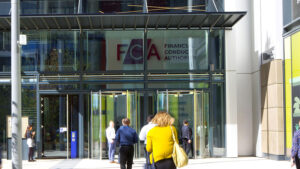Until recently, commercial property was a reliable source of income and diversification in a portfolio. It promises inflation-adjusted yield, capital stability and a bulwark against equity and bond market volatility. However, in recent years, it has become more like a bad relationship: too good to leave, but too bad to stay. How should investors view commercial property today?
There has been a succession of problems for the sector: Brexit, the weakness in high street retail, the pandemic, plus the uncertainty in the office market. Commercial landlords have had a number of public spats with tenants over non-payment of rent. Capital values have sunk and the outlook still looks uncertain. Investors have been backing away from the sector and seeking alternatives such as infrastructure or speciality Reits.
A more nuanced picture
Standard Life Investments Property Income Trust manager Jason Baggaley (pictured) believes the picture for commercial property is more nuanced than this bleak picture suggests.
“Some retail is attractively priced, whereas some still has a long way to fall,” he says. “Industrial is good, but there are areas of risk and there is also a spread of returns for the office market.”
In retail, he says, some sub-sectors, such as supermarkets and convenience stores are doing well, whereas the former ‘prime’, fashion-led shopping centres have struggled. “Rent and rates were far too high” he adds.
For industrials, logistics have also proved popular because of the growing e-commerce trend, accelerated by the pandemic.
He says: “Logistics are growing very strongly. That’s likely to continue as Brexit and Covid force companies to reconsider their supply chains and move storage to the UK to avoid disruption. However, there is risk in the wider industrials sector with some occupiers quite susceptible to a more difficult economic environment.”
Outlook for offices remains unclear
For offices, the picture is still very uncertain. On the one hand is HSBC’s recent announcement that it would be reducing international office space by 40% and adopting a “very different style of working post-Covid”. On the other is Goldman Sachs chief executive David Soloman calling home working an ‘aberration’ and making it clear he expects his staff back in the office the moment it is safe.
Aberdeen Standard head of UK investment research real estate Graham Porter believes there is still some denial over the future of the office.
“By the time we go back to the office, we may have spent 18 months at home. A lot of people will be reluctant to go back in full. We see some landlords unwilling to countenance what this might mean for supply and demand.”
Porter believes the pressure is likely to be greatest in those ‘gateway’ cities (London, New York, Paris, Sydney), where people have long, expensive commutes and therefore the most to gain from a move to agile working.
Nevertheless, Liontrust head of multi-asset John Husselbee says there could be an alternative scenario. “It is difficult to judge the balance between office space and working from home needs until we return to normal office life,” he says. “We may, in fact, see a reversal in space density where employees may demand more space.”
The impact on asset prices
Is this uncertain picture in the price of assets? Investment trusts are usually revalued quarterly and open-ended funds monthly so valuations today should, in theory, reflect these structural changes. However, the pandemic has meant that there are very few transactions on which to base valuations.
Porter says: “We see a situation where there have been valuation adjustments in retail and shopping centres, but there is still a huge group of ‘non-distressed’ sellers. There may be a stodgy situation, where there aren’t a lot of transactions and valuations edge lower.” Distressed sellers have often sold to private equity buyers at low valuations.
It is possible, therefore, that the problems are not yet fully reflected in the net asset value of the funds. The hefty discounts for closed-ended funds would appear to adjust for this potential weakness. At the top end, the BMO Commercial Property trust is on a 38.4% discount to net asset value, with the Schroder Real Investment trust and Standard Life Investments Property Income trust also on significant discounts. Even the UK Commercial Property Reit, which has delivered positive performance over the past 12 months, is trading on a 15.9% discount. However, the same can’t be said for open-ended funds.
Infrastructure is not a like-for-like replacement
Square Mile senior investment consultant Jake Moeller is wary of taking an essentially short-term view for a long-term asset class.
He says: “Commercial property has generally been good at reinventing itself.” He points out that some of the funds have rental collection levels above 90%, so while there is some distress, landlords are protected by long-term leases and have been able to negotiate with tenants.
He is also sceptical that some of the potential replacements for commercial property holdings, such as infrastructure, are a neat replacement.
“Infrastructure is a complex asset class. It tends to be project-specific and it can present a lot more problems from a due diligence perspective. I don’t think infrastructure can be a straight substitute for commercial property.”
Liontrust favours closed-ended structures
Husselbee continues to see a case for investing in commercial property, largely via closed-ended Reits and investment trusts, which we believe are more transparent, giving greater access to, and understanding of, the underlying assets.
He adds: “Commercial property is certainly not dead but it is at an inflection point, with asset owners needing to focus on tomorrow’s world. In order for the sector to adapt to changing consumer trends, demographics, and technology, tenants and landlords are seeking policy reform.
“In terms of broader property positives, the asset class has low correlation to equity markets, benefiting from long-dated rental income, and is also an efficient hedge against inflation.”
Nevertheless, he is balancing his commercial property exposure with specialist property managers focused on sub-sectors such as healthcare, logistics, offshore wind, battery storage and digital infrastructure.
The outlook for commercial property may not be as grim as has been suggested. There remains considerable uncertainty, but prices may reflect this potential weakness, at least in the closed-ended sector. The relationship may have been through its rocky patches, but it may still be too good to leave.







